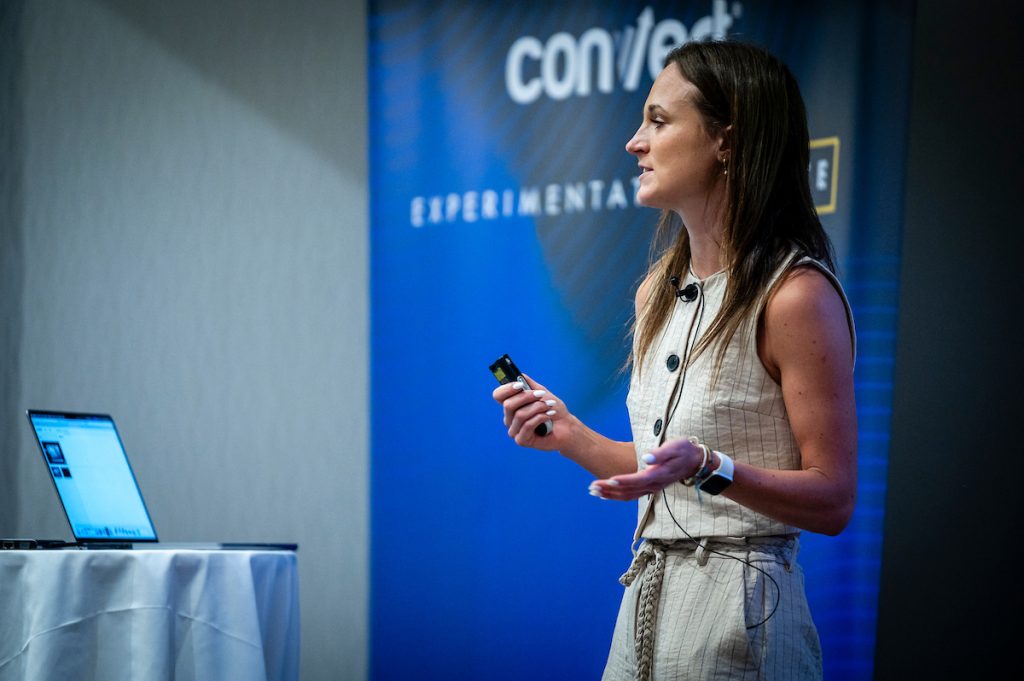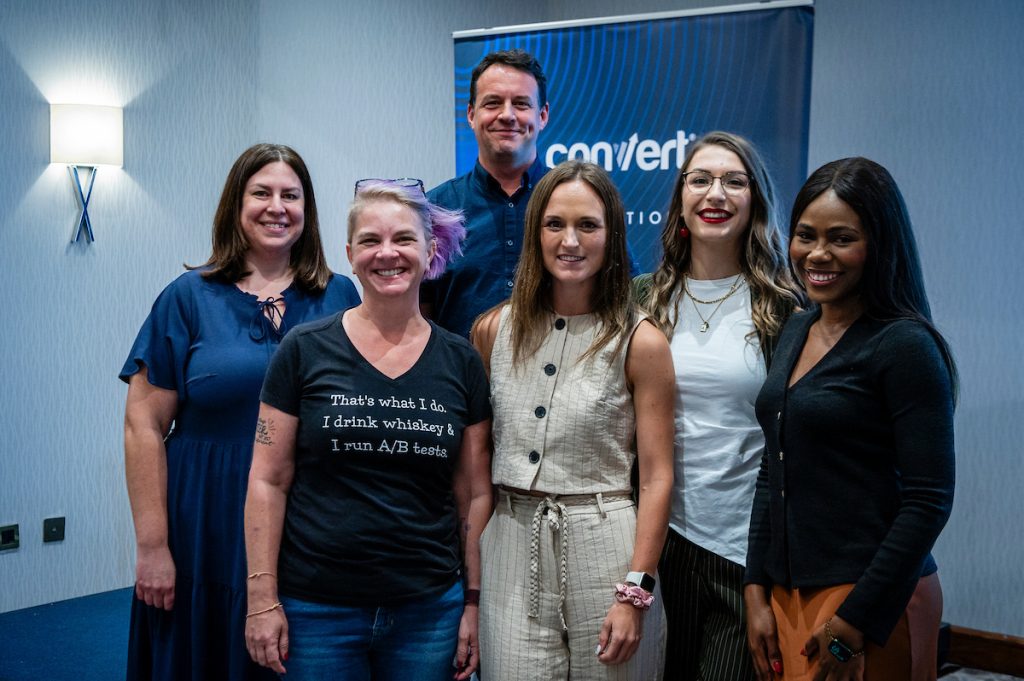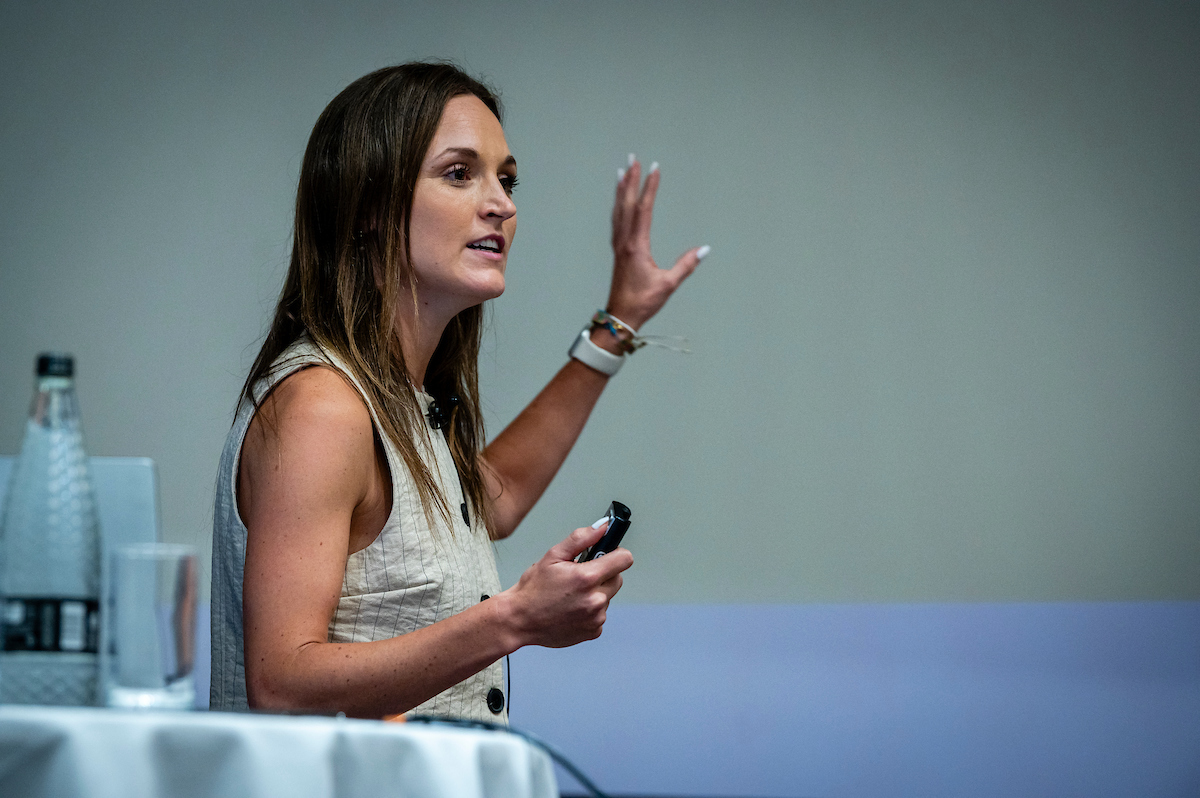
At this year’s summer Experimentation Elite conference, Creative CX’s Senior Strategy Consultant, Sadie Minors, spoke on stage as part of the Test and Learn Community (TLC) Mentorship Summit.
Her talk, The Psychology Cheat Code: Why Experiments Matter, explored the best intersection of psychology and experimentation, and how a deeper understanding of human behaviour can strengthen experimentation programmes.
But even with a strong understanding of your user base and human behaviour, unfortunately there’s no such thing as a “no-brainer” test.
Why Psychology Matters in Experimentation
Sadie opened by sharing an anecdote about how someone had joined a queue after her without actually checking to see if she was in the right queue. It is these funny little irrational human behaviours that sparked her interest in psychology- as despite being illogical, they occur all too often.
It’s the intersection of both psychology and experimentation, and the opportunity to continuously learn about human behaviour through running AB tests, that’s kept her in the field so long.
The Importance of Context and Audience Understanding
A recurring theme in Sadie’s talk was the importance of context.
Even well-established psychological principles, such as social proof, where individuals look to the actions of others to guide their own decisions, can have very different effects depending on the situation and audience.
She described this with reference to Elaboration Likelihood Model (ELM), which explains how people process information and make decisions through two distinct routes:
- Central route: When motivation and engagement are high, individuals invest more cognitive effort, leading to more enduring behaviour change.
- Peripheral route: When motivation or engagement is low, decisions are based on surface-level cues, resulting in more temporary behaviour change.
The same person may shift between these routes depending on the context, a point that Sadie brought to life with everyday examples, from navigating her way through airport queues with full attention, to casually following others when shopping in a busy store.
In experimentation knowing when your audience is engaging through the central or peripheral route can heavily influence both test design and interpretation of results.
No Such Thing as a “No-Brainer Test”

One of Sadie’s key messages was that there is rarely such a thing as a “no-brainer” test.
While some ideas may seem universally effective at first-glace, audience behaviour is rarely all the same. Differences in motivation, identity, and social context can all lead to unexpected outcomes.
Sadie has a full article on our website for those interesting in exploring this concept further.
The Ingroup-Outgroup theory was another concept highlighted during the session. People naturally align themselves with groups they identify with, and differentiate themselves from groups they perceive as separate. This behavioural dynamic should be carefully considered when creating hypotheses and interpreting user behaviour.
Building a Psychology-Informed Experimentation Process
Sadie also outlined a set of guiding questions that can help ensure psychological principles are applied thoughtfully throughout the experimentation process:
Before running an experiment:
- Am I solving a real, well-defined problem?
- Is the psychological principle I’m applying relevant to the situation?
- Do I fully understand my audience and their context?
After running an experiment:
- Has audience behaviour changed in the way I expected?
- What have the results revealed about my audience?
- How can psychological insights help explain the outcome?
Three Core Lessons
The session closed with Sadie sharing three key lessons learned from applying psychology to experimentation:
- Human behaviour is inherently unpredictable, and context always matters.
- When used thoughtfully, psychological principles can produce meaningful, lasting behaviour change.
- Continuous experimentation and iteration are essential for refining and validating assumptions.
Sadie’s session offered valuable reminders for anyone involved in experimentation: truly understanding your audience and applying psychology with care can lead to more meaningful insights, stronger tests, and more reliable long-term outcomes.
Celebrating the Rising Stars and the TLC Community

The TLC community continues to do fantastic work creating opportunities for new voices to be heard within the experimentation space. Programmes like this not only support individuals in developing their confidence and expertise, but also allow the wider community to hear a variety of perspectives and approaches.
It was brilliant to see all of the mentees deliver such strong and insightful talks. Each speaker brought something different to the stage, and it’s exciting to watch emerging talent grow and contribute to experimentation.



